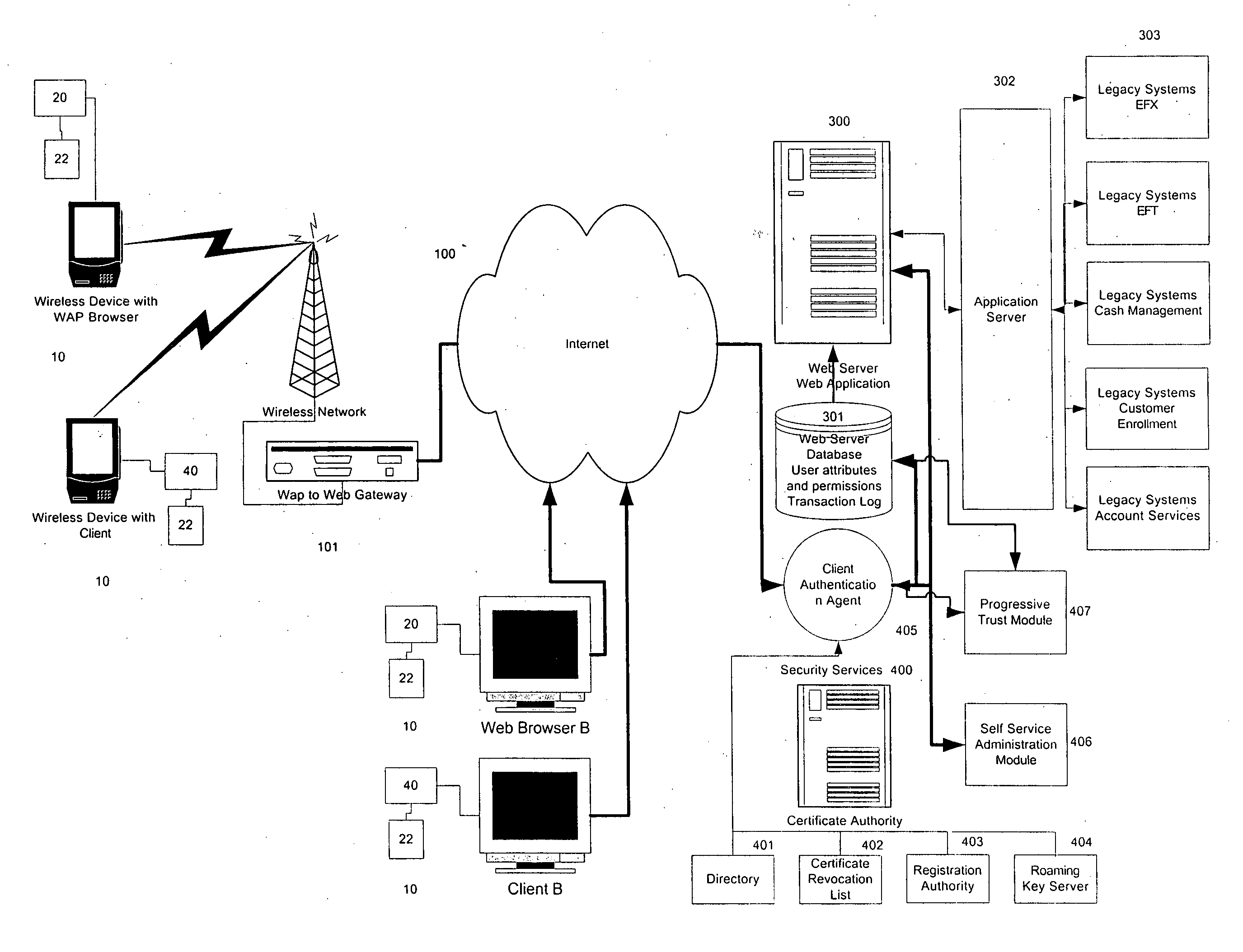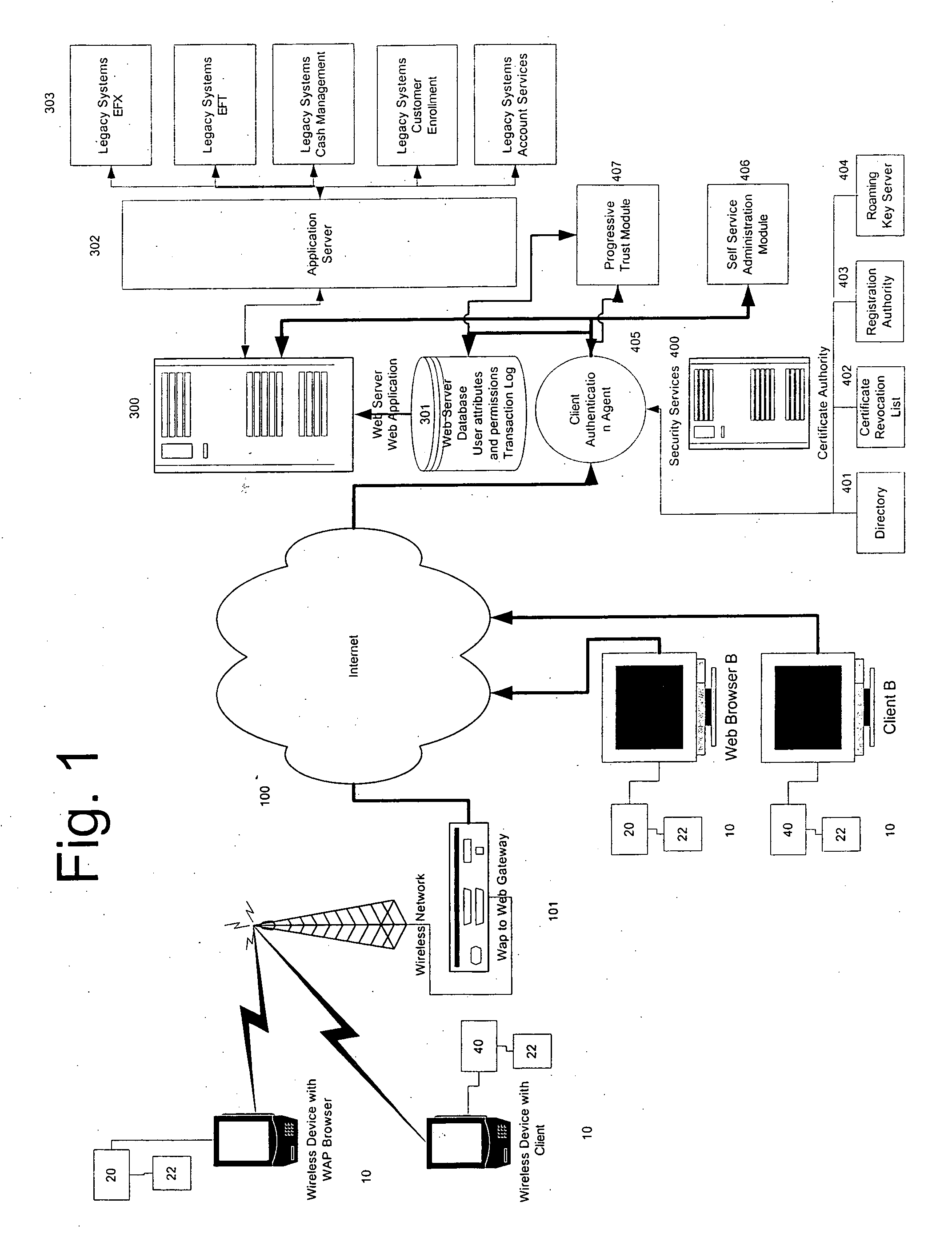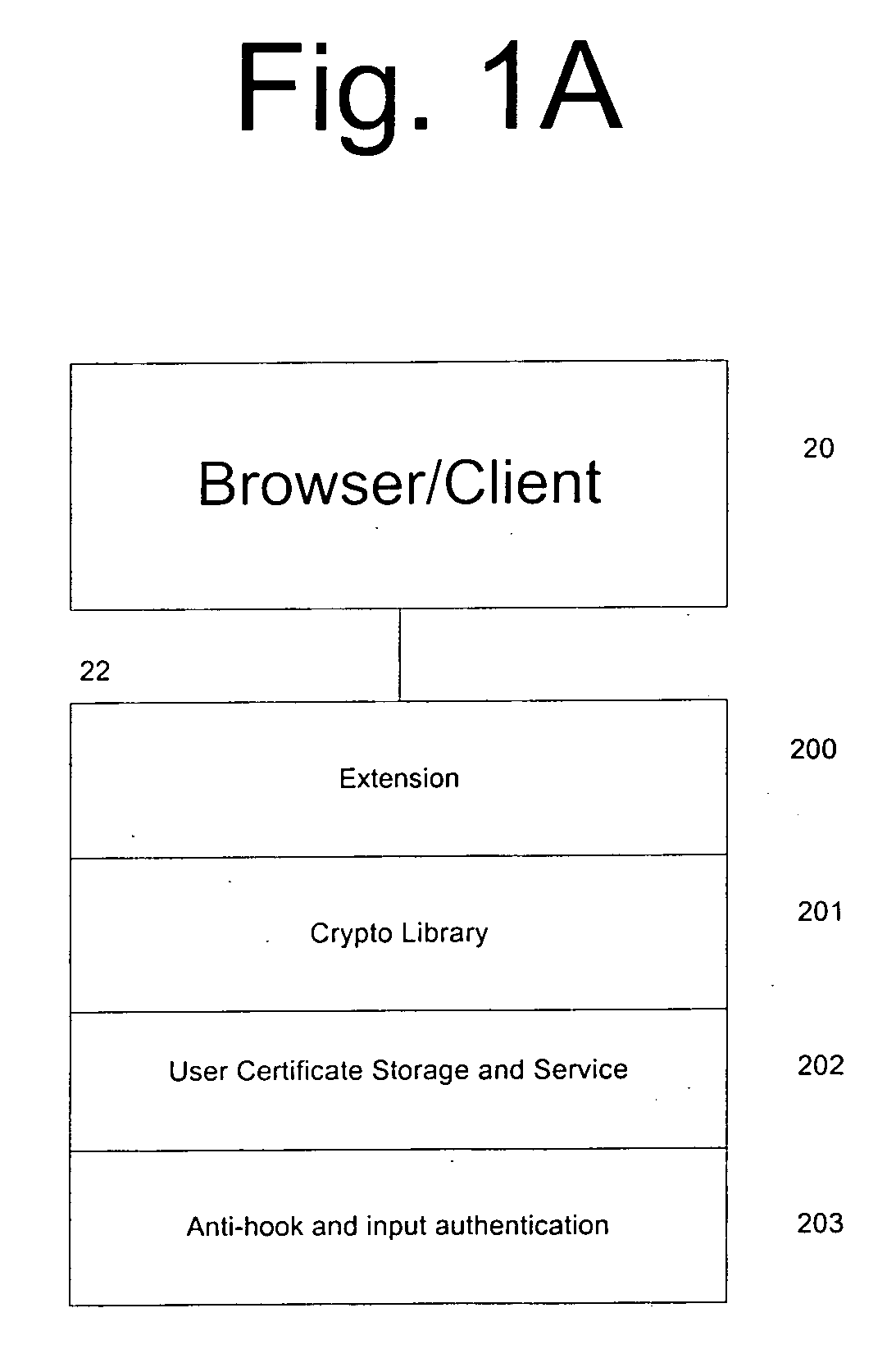Method, system and computer program for protecting user credentials against security attacks
a user credentials and security attack technology, applied in the field of secure authentication of users using public key cryptography, can solve the problems of difficult shutdown of phishing exploits by authorities, financial losses, identity theft, etc., and achieve the effect of relatively weak security
- Summary
- Abstract
- Description
- Claims
- Application Information
AI Technical Summary
Benefits of technology
Problems solved by technology
Method used
Image
Examples
Embodiment Construction
[0074]As illustrated in FIG. 1, at least one known network-connected device 10 is provided. Network-connected devices 10 may consist of a number of digital devices that provide connectivity to a network of computers. For example, the network-connected device 10 may consist of a known personal computer or a known WAP device, cell phone, PDA or the like.
[0075]The network-connected device 10 is connected to the Internet 100 in a manner that is known. Specifically in relation to FIG. 1, the connection of a network-connected device 10 that is a known WAP device to the Internet is illustrated, whereby a known WAP to WEB gateway 101 is provided, in a manner that is also known.
[0076]Also as shown in FIG. 1a, each of the network-connected devices 10 may include a known computerized device, which includes the browser / client application 20. The browser can be a standard Internet based browser, such as Netscape's NAVIGATOR™ or Microsoft's INTERNET EXPLORER™ or a known mini browser for wireless ...
PUM
 Login to View More
Login to View More Abstract
Description
Claims
Application Information
 Login to View More
Login to View More - R&D
- Intellectual Property
- Life Sciences
- Materials
- Tech Scout
- Unparalleled Data Quality
- Higher Quality Content
- 60% Fewer Hallucinations
Browse by: Latest US Patents, China's latest patents, Technical Efficacy Thesaurus, Application Domain, Technology Topic, Popular Technical Reports.
© 2025 PatSnap. All rights reserved.Legal|Privacy policy|Modern Slavery Act Transparency Statement|Sitemap|About US| Contact US: help@patsnap.com



